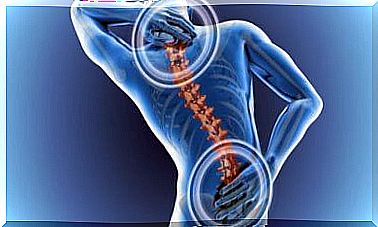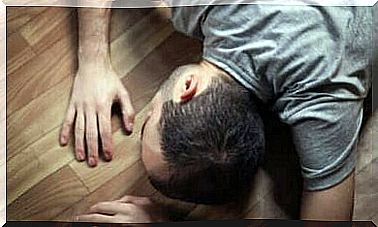5 Tips For Practicing Letting Go

Many people have relationships based on attachment . This is normal as the patterns they have seen throughout their lives have been based on this model. However, the discomfort it causes, the pain and the lack of independence make these people seek advice to learn to practice detachment.
There is a very interesting phrase that summarizes what attachment is, differentiating it from love. Psychologist Silvia Congost says: “Dependence is born out of necessity, while love is born out of freedom ”. How true this is! A dependency not only exists in the couple, but it can also happen with family and friends.
How can I tell if I am suffering from emotional attachment?
The first thing is to know if we are really suffering from emotional attachment. It doesn’t all have to be attachment and dependency, so let’s try to identify what each feeling means.
We should suspect that we suffer from emotional attachment when we can’t stop thinking about the other person. Even being at work or with friends, it is difficult to enjoy and focus on other things, as the other occupies all our thoughts. This is neither healthy nor positive.
Another aspect that should alert us is whether we are always expecting a call or message from the other person. It’s as if our attention is only on her and distracts us from the rest. This is not a good thing, especially as there are other things that also require our dedication.
Finally, if we only feel happy when we hear something about or are with the other person, that’s serious! Our happiness must come from within, not depend on others. This also alerts you to a self-esteem problem.

Emotional Attachment Symptoms
To better illustrate and identify emotional attachment, let’s show some examples of symptoms that can alert us. If we feel a lot of anxiety when we discover that the other person has not responded to us after half an hour, and so we look at the cell phone compulsively, this is a clear sign.
Another symptom of emotional attachment is the inability to get things done and to feel good without the other person being present. If we don’t know how to have fun if the other person is not present, we have a clear warning that there is a problem that must be resolved as soon as possible.
The other signs that can alert us are the following:
- We need to please and satisfy each other in order to feel good.
- We don’t see the other person’s faults, only what we like about them.
- We are afraid of being rejected or abandoned by it.
- Because of this, we act possessively and feel jealous.
- The phrase “ without you I am nothing ” defines our relationship.
Consequences of Emotional Attachment
As we can see, emotional attachment is not healthy. It is impossible to have a healthy, trust-based relationship if we are afraid of losing the other person.
Since our whole world revolves around the other person and we are not autonomous but dependent, we are in a toxic relationship that only causes pain.
Another consequence of emotional attachment is that our self-esteem decreases. Since we only care about the other person, we stop taking care of ourselves. This causes us to become dim and, when we look in the mirror, we don’t recognize ourselves. We forget about ourselves.
Even though the other person brings us happiness, we always feel dissatisfied and frustrated. It’s like nothing could please us. These feelings are normal when we depend on the outside to be happy.
Obsessive thoughts, anxiety, constant fear of abandonment, the need for affection from the other person… all of this has a fatal outcome. Our self-esteem doesn’t stop plummeting and we get stuck in a relationship where pain is the predominant emotion.
5 tips to practice letting go
Now that we know how harmful emotional attachment can be, it’s important to consider some tips for practicing letting go. This is not an easy task, but with willpower and professional help, it is possible to change the way we relate to other people.
1. Have our own life
Well-worn phrases like “ now we are one ” or “ my world is you ” are a big mistake. Having a partner or someone else doesn’t mean that our lives are one and that we have to do everything together. Meeting friends separately and doing activities alone is essential.
2. Learn to be alone
When we are alone, do we feel sad? Are we distressed if we don’t have that person by our side? It is important to understand that she has not always been present in our lives, and that one day the relationship may end or our paths may take different directions. We must learn to be alone and enjoy this solitude.

3. No one is responsible for us
This tip is essential for practicing detachment . No one but us should be responsible for our happiness or well-being. We are no longer children who depend on adults. Now we must be responsible for our lives.
4. Take nothing for granted
Having a partner does not mean that this person owes us something or will want to stay with us forever. We have probably also ended a relationship in the past.
In fact , when there is attachment, the person tends to have ongoing relationships to avoid being alone and suffering the grief of the breakup. So let’s look at the relationship in a real way, without fantasizing about it.
5. Communication is essential
Are we jealous of the other person? Distrust? Well, it ‘s better to talk about it than fall into obsessive and relationship-damaging practices.
This can clear our doubts, reassure us and help us understand that everything is in our heads and happens because of insecurity. Communication is essential.
Practicing letting go is an exercise
We cannot close this article without important information: the recommendation to seek a professional if necessary. In the field of psychology there are many people specialized in emotional dependence who can help us practice letting go more efficiently.
Building healthy relationships is not easy, but it is possible. There are many learned patterns that we must unlearn. It is our responsibility to do this.









